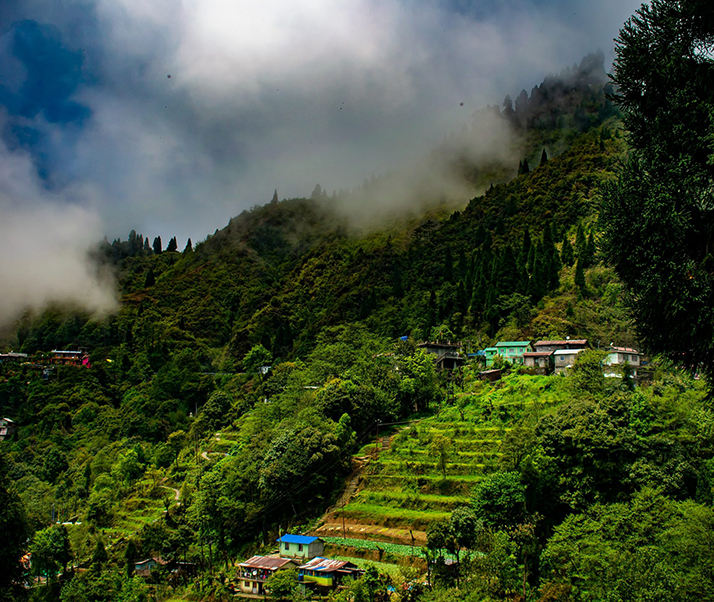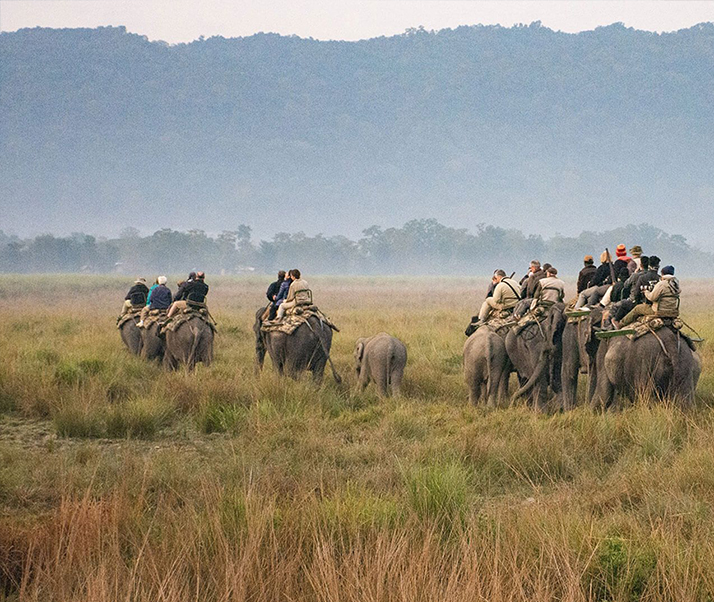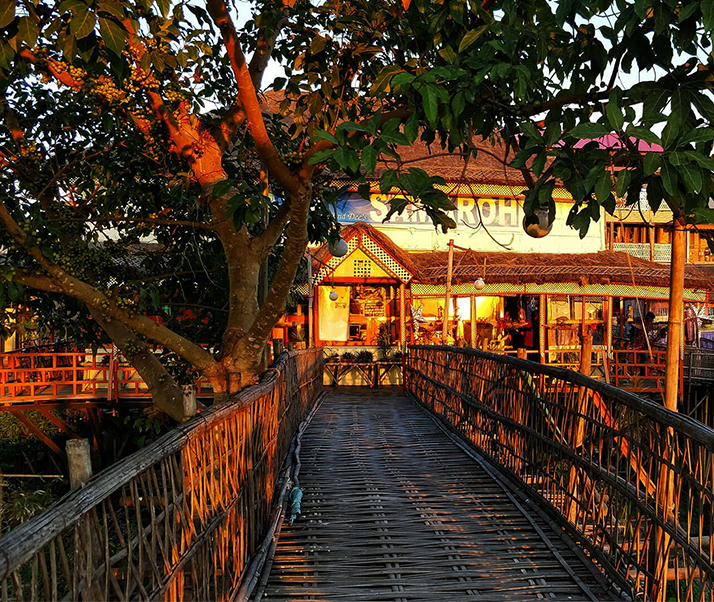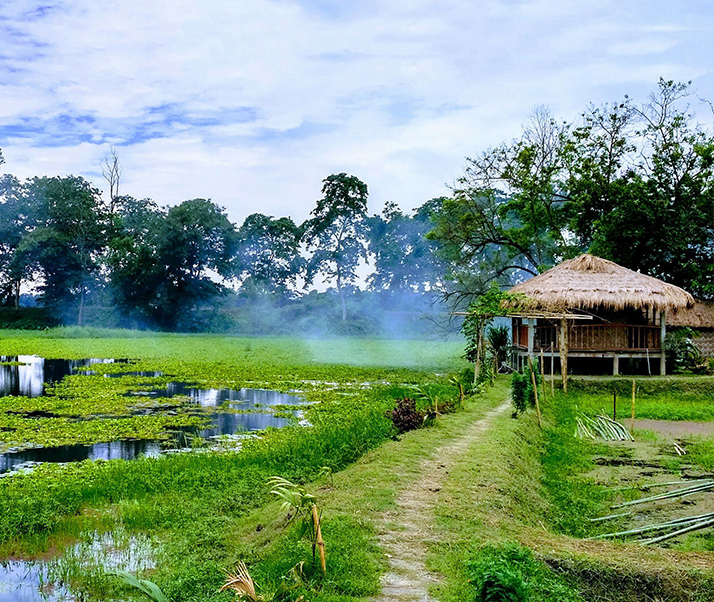+91 9884683139
talk to our Destination
specialist

Situated amidst lush green valleys and majestic mountains, Assam is the land of breathtaking beauty and matchless grace. The sprawling tea gardens, exotic wildlife, verdant flora and fauna, swift and scenic flowing rivers, riverine islands, the majestic Brahmaputra, the exotic Bihu dance, vibrant culture, rich tribal traditions and generous people adds further charm to Assam’s gorgeous natural landscape. If you are a nature lover or travel enthusiast, the delightful state of Assam is THE place to be!
From the famed Kaziranga to the opaque Manas, this tourist paradise allows you to get up, close and personal with the wild. Mention Assam and how can the world famous Indian one-horned rhinoceros not come to one’s mind? One can spot this rare species roaming about fearlessly not only at Kaziranga National Park. But also at Pobitora Wildlife Sanctuary.
A treasure trove of stunning untouched natural beauty, Assam is one of the most vibrant States of the country. Assam shares her border with Meghalaya, Arunachal Pradesh, Nagaland, Manipur, Tripura, Mizoram and West Bengal. It also shares international border with Bhutan and Bangladesh.
The Ahoms, the dynasty established by Sukaphaa in 1228 is the land’s most illustrious dynasty. The Ahoms uninterruptedly ruled the State for 600 years.
Home to various ethnic, religious and linguistic groups, Assam is known for its amazingly rich and composite culture. Bihu is the most festival of the State. Observed by 65 different Assamese tribes, Bihu is one of those cultural threads that bind the diverse people of Assam. Into a beautiful and unique fabric of identity.
The climate of Assam is typically ‘tropical monsoon rainfall’ type, with high levels of humidity and heavy rainfall. People here enjoy a moderate climate all throughout the year, with warm summers and mild winters. In the monsoon season, the whole state comes alive with the beauty of nature. The best time to visit the place is the winter season i.e. from October to April, which is also the festive season of Assam.
Key Facts
Apr - Jun: Min: 30° C / Max: 38° C
Jul - Sep: Min: 26° C / Max: 32° C
Oct - Mar: Min: 8° C / Max: 20° C

City of Eastern Lights!!
A gateway to northeast India, Guwahati lies between the bank of Brahmaputra River and foothills of beautiful Shillong plateau. A vital tourist destination in itself, this sprawling city is an amalgamation of rich natural..
beauty and vivid culture. The history of Guwahati goes back to over 1000 years. Known as Pragjyotishpura (City of Eastern Lights) in the ancient times, the Demon King Narakasura is said to have built the city of Guwahati.
Home to many holy sites, Guwahati is known for its Temples. You can climb the Nilachal hill to reach one of India’s most revered Sakhti Peethas - The Kamakhya temple. Umananda temple dedicated to Lord Shiva stands on the Peacock Island on river Brahmaputra.
Apart from stipulated tourist destinations, there is lot more in Guwahati to be explored. Cruise down the untamable Brahmaputra and witness the vastness and tranquility of the mighty river. Guwahati is also a place where you can indulge in several outdoor activities like trekking, river rafting, motor biking etc.

Wildlife Capital of India!!
As you enter Kaziranga, you are stunned by its lush wilderness. The great Indian one-horned rhinos peep out of the tall elephant grasses, the park sets the tone for a never-before experience.
A United Nations Educational, Scientific and Cultural Organization (UNESCO) natural heritage site Kaziranga is a home to two-third of the world’s population of endangered one-horned rhinoceros and is also a tiger reserve with the highest density of tigers in the world. Kaziranga is also popularly known as the home of the “Big five” and a paradise of bird lovers.
Spread over Golaghat, Nagaon and Sonitpur district of Assam, Kaziranga National Park (KNP) is the largest protected area in the State with an area of 858.98 sq km. The park features four different kinds of vegetation – the tropical moist mixed deciduous forests, tropical semi-evergreen forests of the tall grasses, open jungle and short grasses.

City of Eternal Romance!!
Known for pristine beauty, pretty parks, ancient temples and colonial buildings, Tezpur stands between the snow-capped mountains of the Himalayas and verdant hills on the northern bank of Brahmaputra.
Known as Sonitpur in the olden days, Tezpur is accepted as the cultural capital of Assam as some of the prominent cultural stalwarts of Assam like Jyoti Prasad Agrawalla, Bishnu Rabha and Bhupen Hazarika were connected to this city.
Tezpur is also home to several ancient temples and archeological ruins. The most famous is the Mahabhairav Shiva Temple, which date back to the age of Mahabharata. The Holeswar temple here is said to date from 18thCentury. Bhairabi temple in the city holds immense religious and historical significance. It is said that King Banasura’s daughter Usha often came to worship here.

World’s Largest Fresh Water Island!!
Majuli is a lush green environment-friendly, a pristine and pollution-free freshwater island in the river Brahmaputra, just 20 km from the Jorhat city and located 347 Kms..
from Guwahati. With a total area of 1250 sq. km. Majuli is the world's largest river island and it attracts tourists from all over the world.
Among one of the most surreal places in India, Majuli is also a strong contender for a place in UNESCO's World Heritage Sites. Mostly inhabited by Tribals, the culture of Majuli is unique and quite interesting and is one of the key reasons why people love this place so much. It is also called the cultural capital of Assam. The festivals celebrated here are all joyous and vibrant. The main festival in the town of Majuli is called Raas and it is an exciting and interesting spectacle.